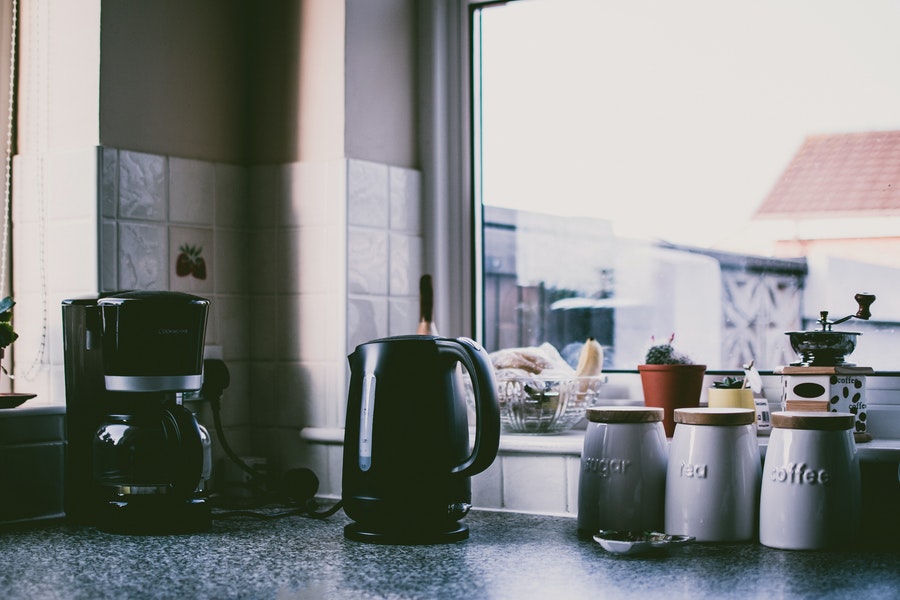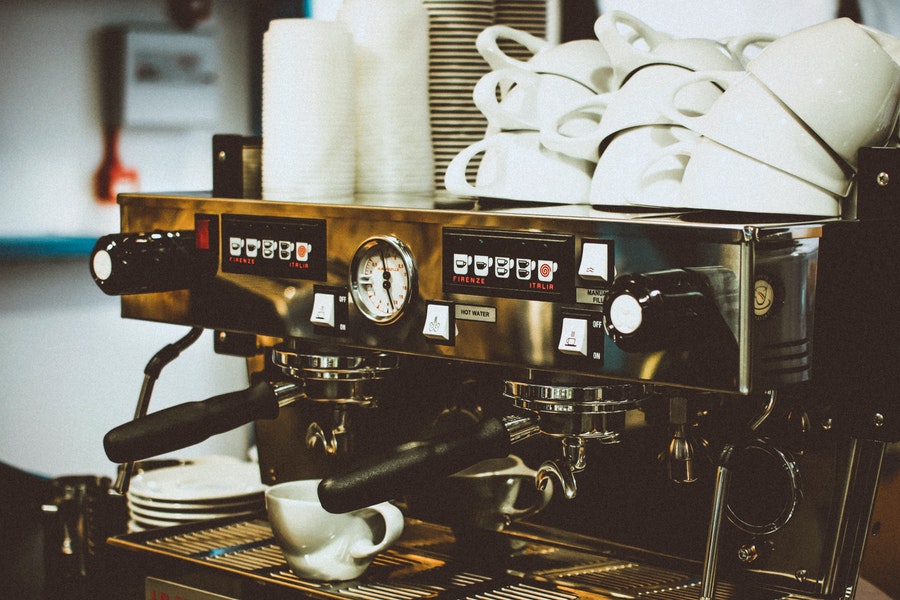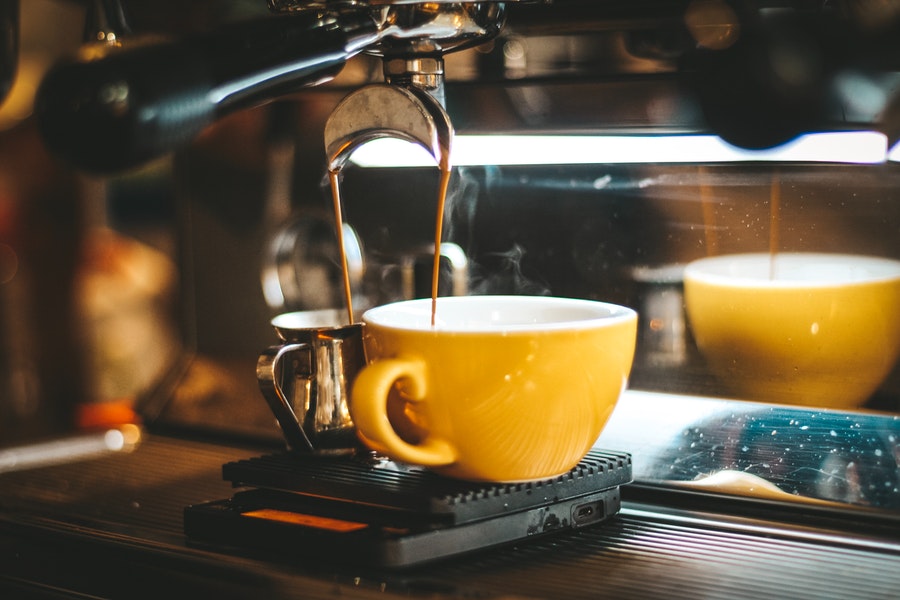Every morning when making coffee with my kids, I am fascinated by the whole process. So amazed at how perfectly timed everything is – and how coffee machines turn cold water into hot coffee without fail! So how does a coffee maker heat water?
The best way to understand what happens inside a coffee maker is to appreciate its individual components.
Contents
How Does a Coffee Maker Heat Water?
A coffee maker heats water by pushing the water through a small metal tube and into a heating element. The heating element boils the water to between 195 and 205 degrees Fahrenheit, the optimal temperature for brewing coffee.

It all starts with the heating element – a small coil of metal that can transfer heat energy to the surrounding water. How does this coil heat up in the first place?
Heating Element Needed to Heat Water
Here’s where electricity comes into play. There is an electrical source (the plug) sending power through two wires and into the heating element in your coffee machine. When you turn on the machine, this causes a flow of electrons within the metal coil itself, creating heat energy and causing it to get very hot indeed! A typical coffee maker uses 700-1200 watts per day, which makes 12 cups of coffee per day.
However there’s one more step left before I end up with boiling water: transferring this heat energy. The hot metal coil inside your coffee machine essentially acts as a tube that channels water through it; when this happens, it transfers its heat energy to the surrounding liquid. And once all that water has been transferred through and heated up sufficiently, I am left with boiling point H2O!
Coffee Maker Parts That Heat Water
You don’t need to be an engineer to appreciate how your coffee machine heats the water. From the filter to the heating coil itself, all of its parts serve a necessary function. A coffee maker comprises the following parts:
- A filter to separate the coffee grounds from other parts of the drink
- A reservoir that holds water that will be poured into the brew basket
- A brew basket that houses a mesh screen through which liquid passes and drips into one or more thermal carafes below
- A heating element that sits beneath the carafes, and it’s what heats everything inside
- A thermometer that keeps track of how hot this area is becoming at any given time
How Long Does It Take for a Coffee Machine to Heat up Water?
The time it takes for a coffee machine to heat water depends on several factors, including the size of the heating element and the power of the heating coil.

A drip coffee maker, like Bunn Coffee Makers, has a small capacity and low-powered heating element will take longer to heat water than a large coffee maker or one with a high-powered heating element. Typically, coffee makers heat water within 5-8 minutes.
Drip Coffee Maker Time to Boil Water
Generally, drip coffee machines take 4-5 minutes to heat water up to brewing temperature. The larger your coffee machine’s capacity and how much power it uses, the faster your machine will heat up water for brewing purposes.
Single-Serve Coffee Machine Time to Boil Water
Single-serve coffee machines are typically compact and need less energy to brew one cup at a time instead of multiple cups at once (like with traditional drip machines). Single-serve machines still need around 3 minutes to reach proper brewing temperature–just enough time for you to put on your pants!
Espresso and Nespresso Machines Time to Boil Water
Ever wonder why your espresso machine works so quickly? Espresso and Nespresso machines are designed specifically for that purpose. They use thermo coils and boilers able to offer rich espresso shots in mere seconds without diluting flavor or potency.
Related Questions
How Does a Coffee Maker Heat Water So Fast?
The heating coil in a coffee machine is usually a thin metal coil. This shape allows the metal to transfer its heat energy to the surrounding water efficiently. This design makes it possible for your coffee maker to make such fast and effective electricity use.
A coffee machine works better than traditional electric pots that take longer because they’re not designed with this specific use in mind.
How Does a Coffee Machine Work?

At the most basic level, a coffee maker heats water to create steam that later turns into liquid water. When you turn on your coffee maker, it starts heating up the water in the reservoir until it reaches boiling point. At this point, steam will start coming out of the top of the machine and into your cup when you know your coffee is ready.
Conclusion
A coffee machine uses electricity to heat water, just like a kettle or hot plate. The main difference between these three appliances is that the pot of a coffee maker must be insulated from the heating coil by a holder, and the heating element itself is surrounded by water rather than air.



